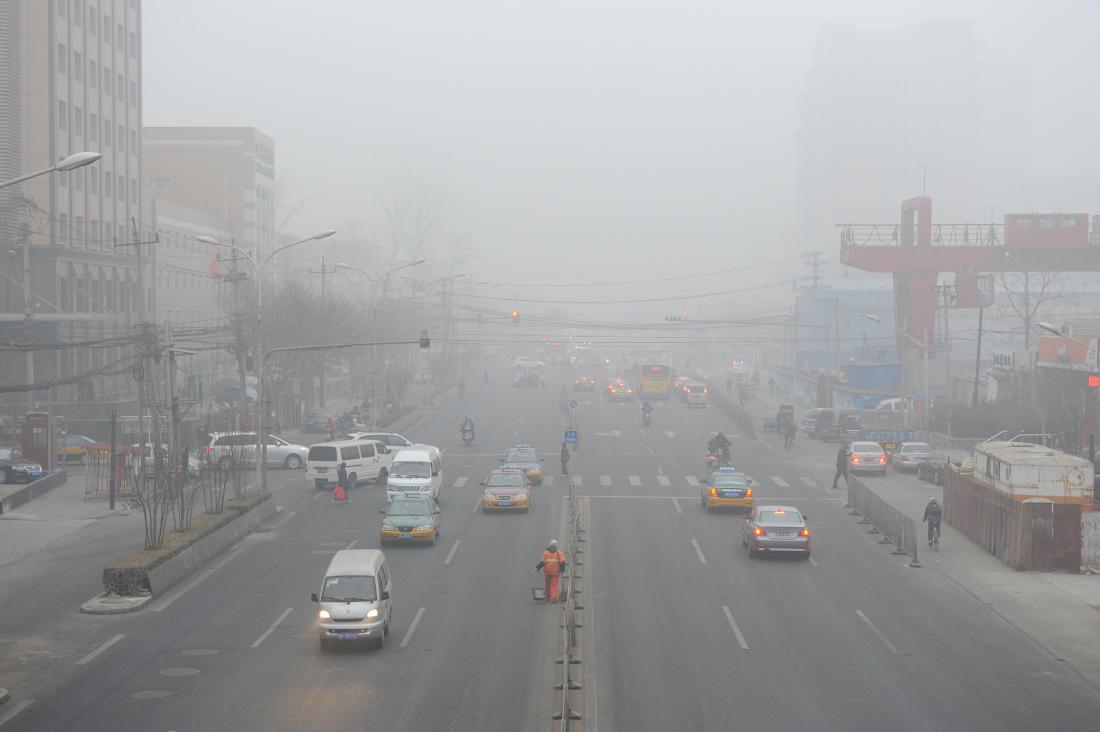Environmental inspections for pollution regulation enforcement in China
- Large enterprises
- Climate change
- Audits
Industrial activity is responsible for much of the pollution and greenhouse gas emissions globally, leading to negative impacts on people’s health, quality of life, and productivity. In collaboration with China’s National Environmental Inspection Program, researchers are evaluating the impact of reporting firms’ hourly emissions data to environmental inspectors on the likelihood of firms being inspected, local air pollution, local economic output, and health outcomes.
Problema de política pública
Industrial activity is responsible for much of the pollution and greenhouse gas emissions globally. Reducing firms’ emissions is thus central to mitigating climate change and reducing local pollutants that impact people’s health, quality of life, and productivity 1. Despite strict environmental standards in some countries, poor monitoring and targeting are persistent challenges to reducing firm emissions and ensuring that environmental regulations are being followed. Existing literature on compliance with environmental regulation suggests that improving the information available to regulators can boost the efficacy of inspections. Real-time emissions data could provide valuable information on firms’ emissions to regulators and thus provide an avenue for more effective monitoring and regulation enforcement. Can providing environmental inspectors with firms’ hourly emissions data increase compliance with emissions standards and reduce firms’ pollution?
Contexto de la evaluación
In China, carbon dioxide (CO2) emissions have steeply increased since 1999, making it the country with the largest amount of annual CO2 emissions in the world today. At the same time, China has set ambitious climate targets, with the goal of achieving net zero carbon emissions by the year 2060.
Despite a range of strict environmental regulations, such as upper limits for a firm’s amount of greenhouse gas emissions, there is a persistent gap between what the Chinese central government requires and what local governments implement. Local inspectors face a lack of information about firms’ violations of environmental standards and emission limits, making it difficult to identify high-emitting firms. A main source of information for inspectors is local citizens’ complaints, either through a phone hotline or by postal mail. Collecting, processing, and checking this information makes it costly to verify complaints. In addition, firms frequently submit biased complaints about a rival firm’s pollution to gain an advantage over their competitor.
China’s National Environmental Inspection Program is designed to ensure that local governments follow environmental regulation. The program sends environmental inspectors to all Chinese provinces to inspect regulatory compliance and identify high-emitting firms to reduce their emissions and enforce compliance with pollution regulation. Local governments in China are required to post inspection reports after teams conduct an investigation, making it possible to assess whether reporting a firm’s violation increases the firm’s likelihood of inspection.

Detalles de la intervención
In the context of China’s National Environmental Inspection Program, researchers are evaluating the impact of reporting firms’ hourly emissions data to environmental inspectors on the likelihood of firms being inspected, local air pollution, local economic output, and health outcomes.
In cooperation with a Chinese data company, researchers obtain emissions data on a real-time basis in 13 Chinese provinces: Anhui, Gansu, Guangdong, Guangxi, Heilongjiang, Henan, Hubei, Fujian, Jiangsu, Jiangxi, Jilin, Liaoning, Inner Mongolia, Shaanxi, Shandong and Zhejiang. The real-time database started in January 2019 and continues to update on an hourly basis until 2022. Researchers collect hourly concentration data for three different air pollutants, and three different water pollutants in every firm included in the study. Researchers identify firms whose emissions data show emissions above the regulatory limit, or suspicious data patterns that may point to intentional manipulation, like a repeated identical pollution reading.
Researchers randomly divide firms into two groups:
1. Information: Firms’ emissions data and possible violation of pollution standards in the information group is reported to inspectors of the National Environmental Inspection Program.
2. Comparison: Firms’ emissions data and possible violation of pollution standards in the comparison group is not reported, remaining within the status quo.
Researchers evaluate the intervention’s effects on the following set of outcomes: firm emissions, local air pollution, firms’ individual activities, health outcomes, and local economic outcomes.
Resultados y lecciones de la política pública
Project ongoing; results forthcoming.
https://www.povertyactionlab.org/evaluation/impact-emissions-trading-scheme-economic-growth-and-air-quality-india
